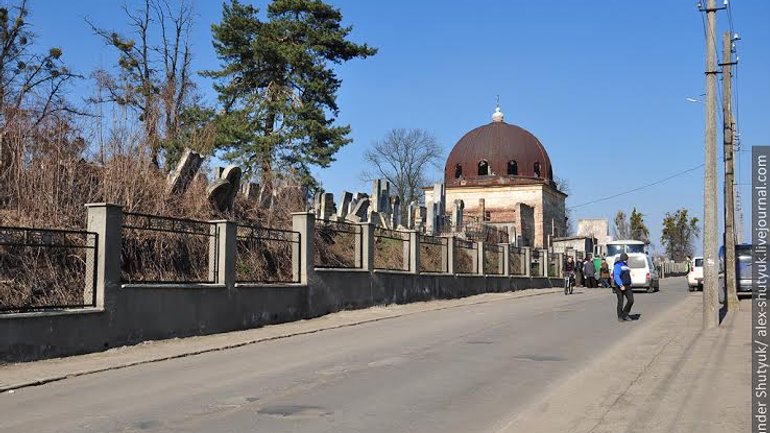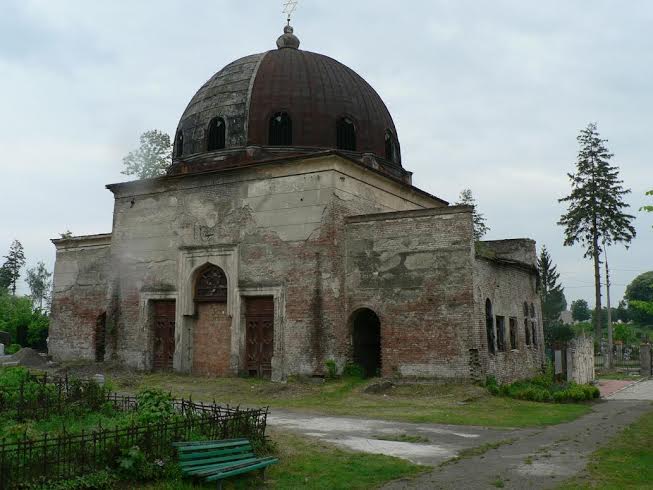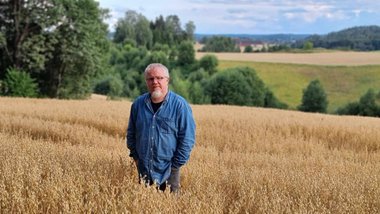Holocaust Museum to be set up at Chernivtsi cemetery

Recently it has been reported that one of the buildings at the Jewish cemetery in Chernivtsi will be renovated. It has been planned to restore it for more than a year. However, there were no clear objectives: why? Now the Jewish community, historians and researchers of the Holocaust and the Jews originating from Chernivtsi agreed on a common idea: to restore the building of Beit Kadishi’ (‘Layhenhalle'- Farewell House) and create a museum of the Holocaust as a department of Chernivtsi Museum for the History and Culture of Bukovynian Jews. One of the founders of this museum is Zissels Joseph – a prominent public figure of Jewish origin.
The first meeting dedicated to the project of a new museum in Chernivtsi, which will be constructed in the Jewish cemetery, has already been held in Kyiv. This cemetery is located on the territory of historical and cultural reserve “Cemeteries on Green Street.” The reserve consists of two cemeteries – the Jewish and the Christian ones.
The meeting was held in the office of the Association of Jewish Organizations and Communities (Vaad). Prominent historians, well-known cultural figures, representatives of public organizations have already spoken about the future museum.
Vaad Chairman Joseph Zissels said that one should already start looking for designers and experts in the organization of museum exhibitions, establish contacts with all interested organizations and individuals who are willing to participate in the project. Zissels’ idea was supported by the Mayor of Chernivtsi Oleksiy Kaspruk and the German Embassy.
The embodiment of the idea must undergo two stages: reconstruction of the building and formation of the museum itself. How the museum will look like is to be discussed at conferences and round tables.
For example, the second meeting after Kyiv is to be held in Chernivtsi.

The German side is interested in the idea and allocates 100,000 Euros. This is a part of the amount that is required only for the restoration of the building. In general, the renovation of premises is worth approximately EUR 400,000. There are also some private sponsors.
Nikolay Kushnir, director of Chernivtsi Museum for the History and Culture of Bukovynian Jews, is confident that the idea will catch the interest of everyone and not only Jews but of the entire city of Chernivtsi, in the first place. And if people know for what purpose restore the House of Farewell, it will be easier to collect the money in the same museum.
“Regarding the museum, a separate group will collect articles,” says Mykola Petrovych. “In our museum the subject of the Holocaust does not take the top spot, it is only part of the exhibition. The concept of the museum is to tell about the life of Jews of Bukovyna. But the Holocaust is a subject that has put an end to this Jewish life. That is why the concept of the museum is to be discussed. For many Jews across the world originating from Chernivtsi, the Holocaust is a key event. They would like it to be a dominant theme. We collect materials, but it is very difficult. There is a lack of objects and photos. We have mainly archival documents - the Holocaust, the establishment of Chernivtsi ghetto. There are many lists with specific names. And all these names should be mentioned in the future Museum of the Holocaust - this is our duty. We look forward to a broad mass debate on the project, creative ideas. If everything goes well, in three years we will approach the formation of the exhibition. Currently, Germany provides us financial aid. This country, as you know, is actively working to restore Jewish cemeteries in Europe, including Ukraine. They have a special project.
The House of Farewell was built in the Jewish cemetery at the request of the city council in 1905-06. The same building – a house of farewell, was functioning at the Christian cemetery, now the Chernivtsi Regional Office for forensic examination is located there (str. Chisinau, 2). Thus, the City Council told to set up such a house at the Jewish cemetery as well.
“The height of the dome of the House of Farewell at the Jewish Cemetery is 11 meters,” Mykola Kushnir says. “There is a large central hall, approximately 20 x 20 meters, and two side halls. Before the Second World War the building was functioning while the cemetery functioned and the community was active. When the Jewish population decreased in the postwar period, the building began to collapse and was out of use. This building is in poor condition now. However, it was made in a very interesting style, for example, the dome is made of solid cast, reinforced concrete, a so-called French technology. Incidentally, the city architect was against such dome.
It appears that many have tried to restore this house. But there was no clear understanding of the purpose of renovation.”
“One should breathe life into it,” adds the museum director. “It has long been said that somehow we must remember the innocent victims of the Holocaust. Moreover, the city of Chernivtsi was directly affected by this – at least 35,000 residents were killed in this way. At the Jewish cemetery, there are two mass graves of Jews who were killed in the Holocaust. There are not all the victims of the Holocaust. For some of them died in Transnistria, where Jews were deported from Chernivtsi. This is the territory of Vinnytsia and Odessa regions. In fact, it was not one person who came up with the idea. Many people are involved - historians, people from Bukovyna, even citizens of other countries. Including Austrians, who even helped in the project reconstruction. Now Germany came out with an initiative to partially finance the renovation of the building. The museum is the second stage. But it is important for us to discuss its concept, because it is important for the builders, because the building should be adapted to the museum.
Photos courtesy of Chernivtsi Museum for the History and Culture of Bukovynian Jews









